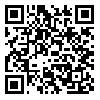BibTeX | RIS | EndNote | Medlars | ProCite | Reference Manager | RefWorks
Send citation to:
URL: http://jcpp.iut.ac.ir/article-1-785-en.html
Two hundred fifty seven bacterial isolates were collected from colza root and rhizosphere in Golestan, Mazandaran, Guilan and Tehran provinces. Antagonistic effect of bacterial isolates on Rhizoctonia solani, the causal agent of colza damping off, was studied using dual culture method. The results showed that, 60 isolates had the ability to inhibit the growth of R. solani on PDA medium. On the basis of the biochemical, physiological and morphological tests, isolates P1, P2 and P3 were identified as Pseudomonas fluorescens. Biocontrol mechanism studies showed that isolates produced antibiotics and volatile metabolites prevented the mycelial growth of the fungus. The isolates produced some of antimicrobial metabolites including hydrogen cyanide, protease and siderophore. Isolate P3 was more effective to inhibit the growth of the fungus in-vitro. The effect of isolates on disease reduction in comparison with control was significantly different. None of the isolates were able to prevent disease occurrence completely. Isolates applied as soil treatment had a significantly higher disease control as compared to seed treatment method. Isolate P3 had considerable effect on reduction disease in the greenhouse conditions. All isolates were capable of colonizing canola roots and so increased canola growth in free-causal agent conditions.
| Rights and permissions | |
 | This work is licensed under a Creative Commons Attribution-NonCommercial 4.0 International License. |






